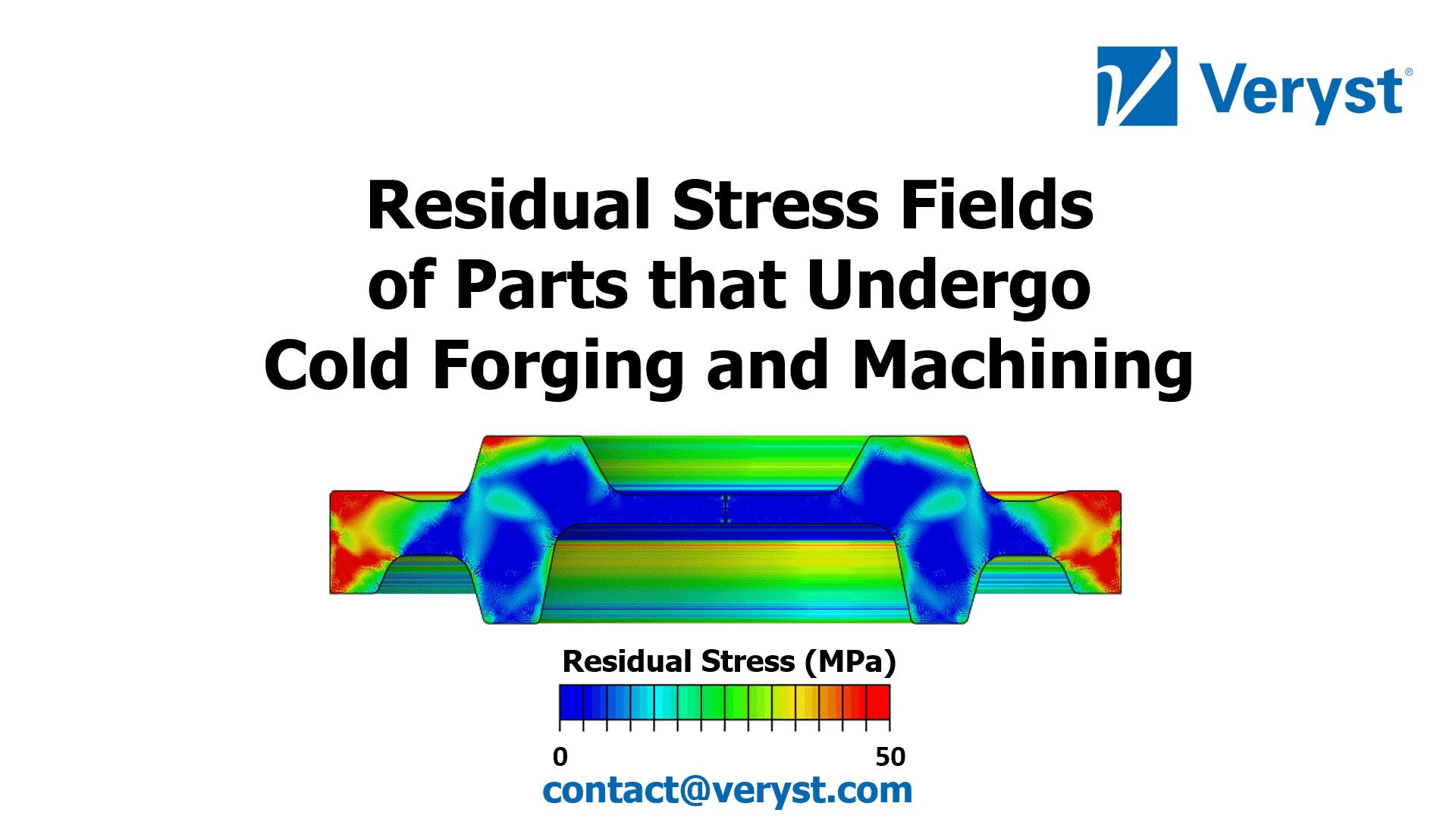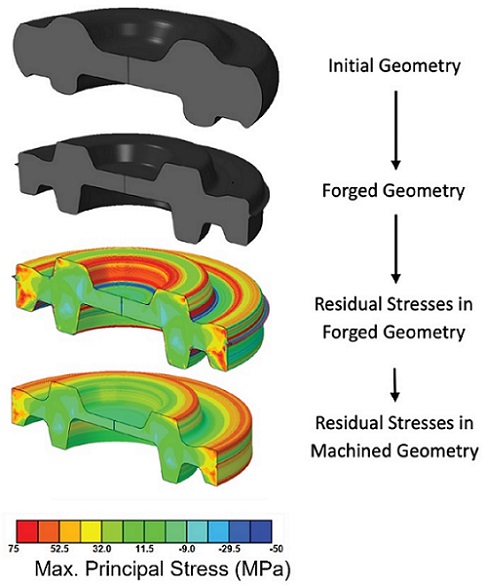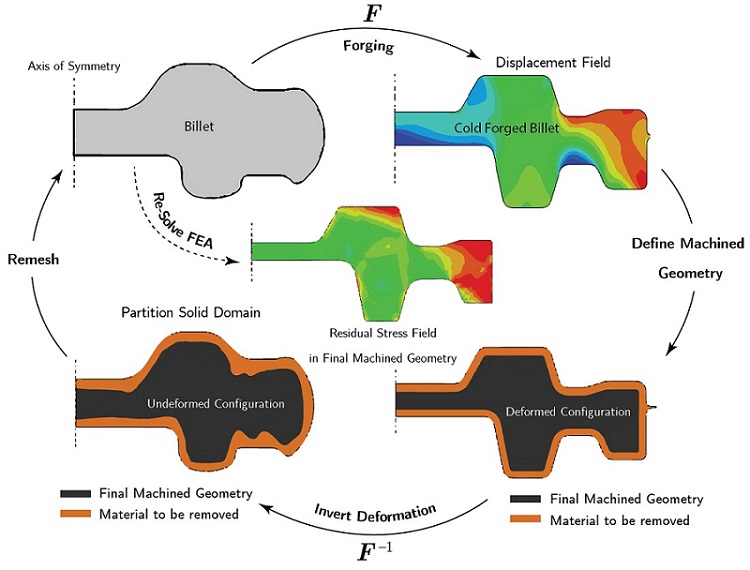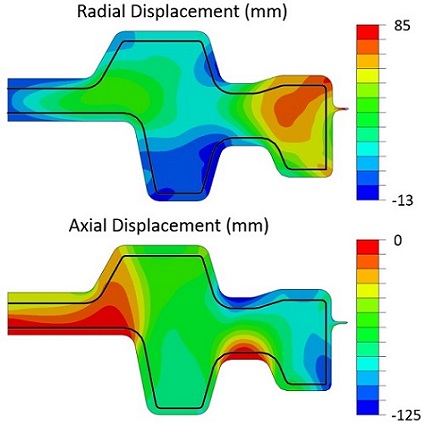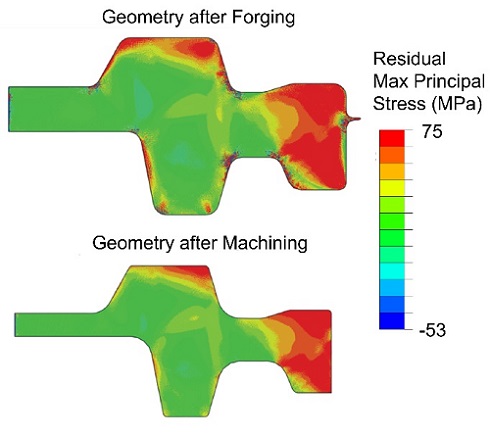Technical Challenge
Cold forging is a common process in the metal forming industry primarily due to its cost, its waste and energy efficiency, and its ability to produce high dimensional accuracy in large volumes. However, cold forged components can often develop high residual tensile stresses that compromise performance, reliability, and lifespan. Furthermore, cold forged components often undergo subsequent machining, resulting in the redistribution of those stresses.
It is important to design the cold forging process to minimize stresses that can compromise the component’s integrity, particularly when post-forging heat treatment is not an option. Finite element analysis is a reliable method for predicting residual stresses. However, large mesh distortions due to forging make it challenging to determine the final residual stress field after machining.
Veryst Solution
Veryst sought to determine the residual stress field in cold forged components after they undergo machining to obtain their final operating form. To determine the redistribution of residual stresses due to machining without explicitly modeling the entire machining process, we would typically remove finite elements from the mesh by reducing their stiffness to zero (see Figure 1).
However, the cold forging process creates large distortions in the finite element mesh such that the finite elements do not align with the machined geometry of the component. As a result, one can predict only approximately the residual stresses in the machined state of the component, and that is done by removing the elements closest to the boundary of the final component.
Veryst developed a finite element (FE) process within Abaqus Standard that is capable of predicting the residual stresses in the final machined configuration of cold forged components without the need to approximate the removal of elements from the FE mesh.
The process relies on determining the shape of a partition in the undeformed state of the component prior to forging. The partition will then deform with the FE mesh during forging and take the shape of the machined component, as shown in Figure 2. The partition defines the boundary of the machined component in the deformed state and will therefore produce a continuous line that defines the finite elements that are to be removed due to machining.
In our finite element process (represented in Figure 2), we determine the shape of the partition using the Python scripting capabilities of Abaqus as follows:
- We solve the forging problem once to determine the residual displacement field due to plastic deformation and the corresponding deformation gradient (see Figure 3).
- We define the outline of the final machined component inside the cold forged component (in Figure 3, the black outline indicates the shape of the machined component).
- We invert the deformation gradient (calculated in step 1, above), to determine the shape of the machined component’s outline in the undeformed configuration (which requires Python scripting).
Once we determine the shape of the machined component’s outline in the undeformed configuration, we partition the undeformed geometry of the component, re-mesh, and solve the cold forging problem once more.
At this point, finite elements located inside the partition define the geometry of the component after machining. As such, we can gradually reduce the stiffness of all elements outside of the machined geometry to zero, which enforces equilibrium, and compute the redistribution of residual stresses in the component due to machining (see Figure 4).
This study shows how information about the residual stress field in the final component can be used to suggest modifications to the cold forging process, determine whether annealing is necessary, and determine the best way to remove material from the cold forged component to minimize the residual stresses.
The finite element process Veryst developed is applicable to any cold forging and machining finite element problem and is not limited by the shape of the component. Our process can be used to determine how the forging parameters affect the residual stress field after forging and machining and help modify them (if necessary) to prevent cracking.
